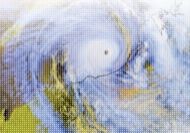Average to above-average cyclone season expected for Australia this year
10/10/2016

Australians should start preparing for a return to a more active tropical cyclone season in 2016–17, according to the Bureau of Meteorology outlook released today.
Climate Prediction Services Manager Dr Andrew Watkins said Australians should expect an average to above-average tropical cyclone season, due to neutral to weak La Niña conditions in the tropical Pacific Ocean.
“This year we’re experiencing warmer-than-average sea surface temperatures around northern Australia, and this will help to fuel the tropical cyclone season ahead.
“History shows that in an average season, about eleven cyclones form in the Australian region between November and April. On average, four of these will make landfall."
Last year had the lowest number of tropical cyclones on record with just three formed during the season. Only one made landfall, with Tropical Cyclone Stan crossing WA's Pilbara Coast as a Category 2 system.
"It is highly unlikely Australia will see a cyclone season as quiet this year," Dr Watkins said.
The release of the Tropical Cyclone Season Outlook for 2016–17 marks the start of severe weather public awareness campaigns in northern Australia. Residents in northern coastal regions are being reminded to prepare now for the coming season.
Tropical cyclones are low pressure systems that form over warm tropical waters and have at least gale force winds (sustained winds of 63 km per hour and gusts of 90 km per hour or more) near their centre. Even tropical cyclones well offshore can have significant impacts on coastal areas. High winds, storm surges and large waves can create dangerous conditions.
The Bureau encourages the community to stay up to date with its latest forecasts and warnings at www.bom.gov.au, via its new BOM Weather app, or by following us on Twitter at @bom_qld, @bom_nt or @bom_wa.
When a cyclone is approaching your area, stay tuned for the latest Bureau of Meteorology forecasts and warnings, and follow the advice of your local emergency services agency.
Read the 2016–17 Australian Tropical Cyclone Season Outlook, or for further information on tropical cyclones click here.
ENDS
NOTE FOR MEDIA: A high-quality video outlining this summer's outlook for severe weather is available, as well as videos explaining tropical cyclone categories and how cyclones get their names.










